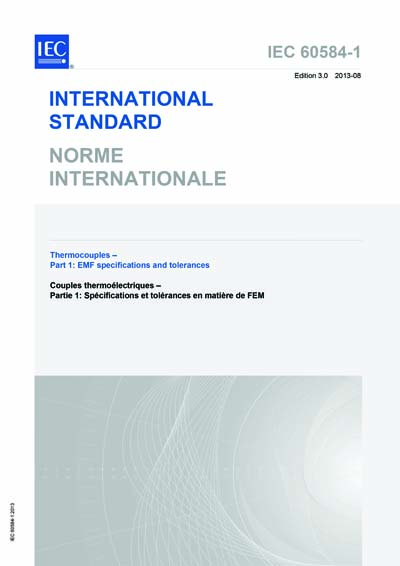Most recent
IEC 60584-1 Ed. 3.0 b:2013
Thermocouples - Part 1: EMF specifications and tolerances
IEC 60584-1:2013 specifies reference functions and tolerances for letter-designated thermocouples (Types R, S, B, J, T, E, K, N, C and A). Temperatures are expressed in degrees Celsius based on the International Temperature Scale of 1990, ITS-90 (symbol t90), and the EMF (symbol E) is in microvolts. The reference functions are polynomials which express the EMF, E in V, as a function of temperature t90 in °C with the thermocouple reference junctions at 0 °C. Values of EMF at intervals of 1 °C are tabulated in Annex A. This third edition cancels and replaces the second edition published in 1995 and constitutes a technical revision. It includes the following changes:
- IEC 60584-1:1995 and IEC 60584-2:1982 have been merged;
- the standard is now explicitly based on the reference polynomials which express thermocouple EMF as functions of temperature. The tables derived from the polynomials are given in Annex A;
- inverse polynomials expressing temperature as functions of EMF are given in Annex B, but inverse tables are not given;
- the range of the polynomial relating the EMF of Type K thermocouples is restricted to 1 300 °C;
- values of the Seebeck coefficients are given at intervals of 10 °C;
- thermoelectric data (EMF and Seebeck coefficients) are given at the fixed points of the ITS-90;
- some guidance is given in Annex C regarding the upper temperature limits and environmental conditions of use for each thermocouple type.
International Electrotechnical Commission [iec]

